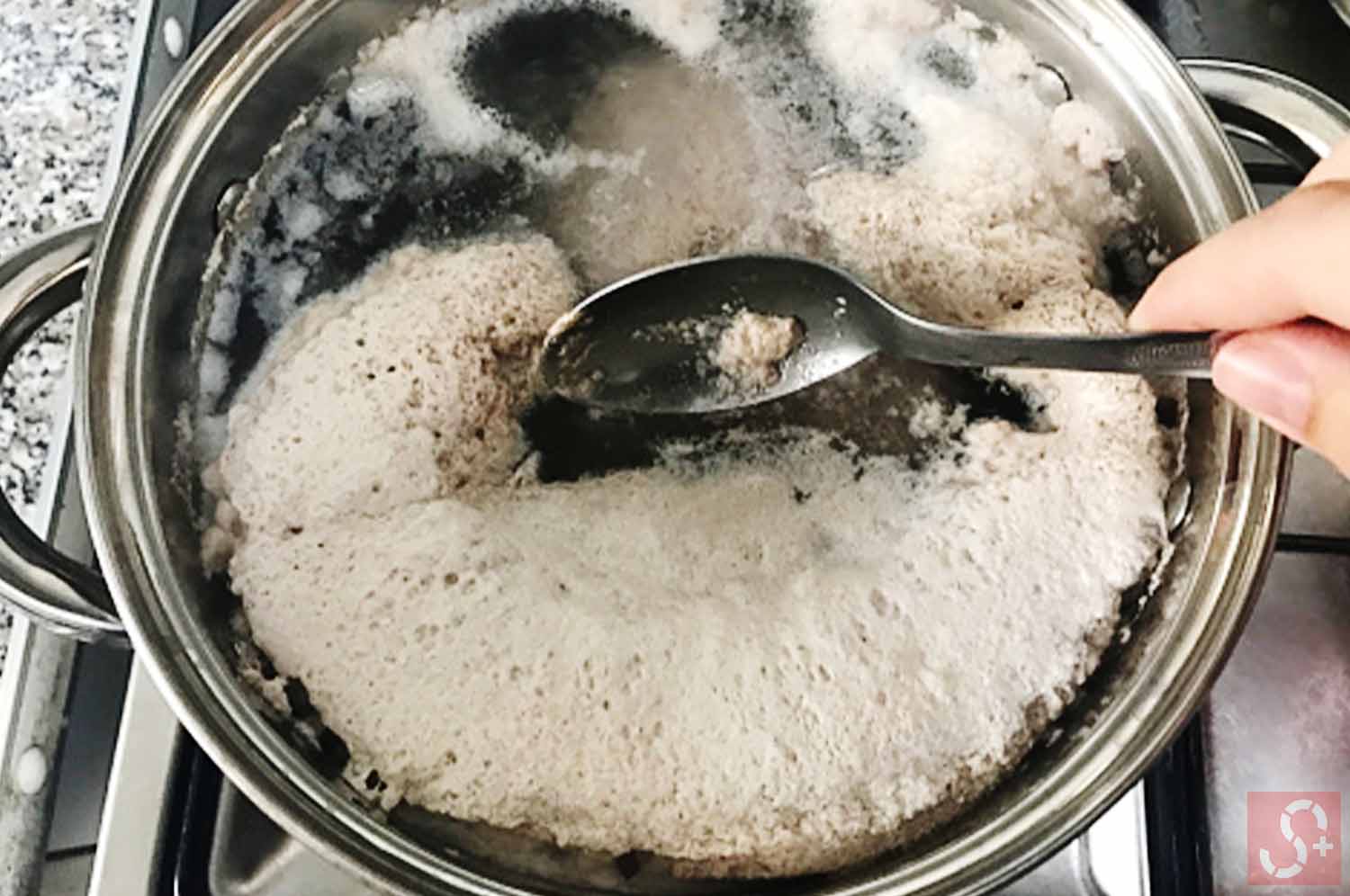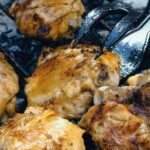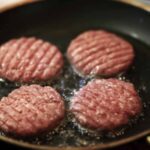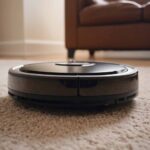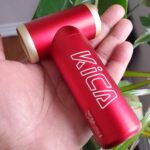Boiling your chicken is a great way to prepare it for things like soups and other dishes that require liquid chicken stock. But when boiling your chicken, you may find that there is some white ooze that comes out from your chicken meat as it’s floating in the hot water.
The foamy white ooze you see floating in the pot of water when boiling chicken is basically a mixture of water, fat, and protein that is naturally found in chicken. This foamy mix is released when chicken is boiled in high heat.
In this article below we drive deeper into this white ooze and if it makes your chicken unsafe to eat.
What is the white ooze when boiling chicken
Essentially, this white ooze is basically a mix of water and protein. Poultry meat is known to have easily digestible protein (which is also why it is so popular as a protein source all over the world). This also means that the protein in the chicken is easily denatured, leading to the soluble protein leaching out of the chicken meat and into the water.
All food contains water as well, especially meat. And as this water mixes in with the protein found in the muscle fibers of your chicken meat, it acts as a conduit for the protein to escape into the water, forming the white ooze that you see when you boil your chicken.
Is the meat safe to eat?
Yes, the meat is completely safe to eat. This white ooze is a natural process that occurs whenever you boil or cook chicken. In fact, have you ever seen how an egg cooks? The egg whites start out as transparent and only turn opaque white when it reaches a certain temperature.
The protein that forms the white ooze from your boiling chicken is the same kind of protein that is found in egg whites.
However, if you’re unsure of whether your chicken is safe to eat or not, you should always use your sense of smell, touch, and vision to ensure that you’re not cooking and serving expired chicken which increases the risk of e.coli or salmonella.
Chicken meat should always be pink when fresh, with only the fatty parts and the skin being more white-colored. Any other color on your chicken meat could present a food safety issue.
Next, smell your chicken meat to ensure that it’s fresh. If you catch any whiffs of rotten or ammonia smells, your chicken is definitely off and should be discarded.
Lastly, feel your chicken meat to see if there is any slimy residue that comes off on your hands. If there is, your chicken is bad, and this slimy residue has a high chance of containing food bacteria like salmonella. Wash your hands thoroughly with soap after doing this, as you don’t want to spread this bacteria to the rest of your kitchen utensils or ingredients.
In what conditions does this occur the most?
This condition happens the most when you expose your chicken to too high heat in the water that you’re boiling it in.
When chicken meat is heated up too rapidly in water that is too hot, the proteins that are present within the muscle fibers in the meat contract in a frenzy, causing a large amount of the moisture in the proteins to be squeezed out in the form of a white ooze.
Can I reduce or stop this from happening?
This white ooze is a natural process that happens when you’re boiling chicken, so there’s not much you can do to reverse it when it happens. Simply skim it off the water when you see clumps forming. Although this white ooze is perfectly safe to eat, they tend to emulsify after a while, turning the chicken water cloudy.
If you are planning to use your chicken water for a clear broth, it’s best to skim off the white ooze before it emulsifies.
You can also try boiling your chicken in water that gradually gets hotter. This avoids the issue of proteins being prematurely squeezed out by the shock of rapid boiling in super hot water, which is the reason why white ooze occurs when boiling chicken. Place your chicken meat in water that is starting to boil on medium heat, then let it come up to cooking temperature by adjusting the heat on the stovetop steadily.
The white ooze issue also happens when you boil your chicken for too long. When under constant high temperature such as boiling water for an extended period of time, the proteins in your chicken contract really tightly and start to squeeze any remaining moisture out, causing the white ooze to come out from your chicken meat and into the water.
Can this happen to other types of meat?
Yes, this white ooze happens when you boil other types of meat, such as salmon and beef. This is basically the same stuff, which is a mixture of protein and water.
It happens most commonly in poultry because protein from chicken meat is digested very quickly by the human body, thus it is denatured and leaks out of the muscle fibers of chicken meat easily if the meat is rapidly exposed to high temperatures of boiling water.
Conclusion
If you’re worried that the white ooze that comes out when you boil your chicken is making your chicken meat unsafe, you don’t have to worry as this is a completely natural process that happens when you cook meat like poultry, beef, or salmon. The best way to check if your chicken is safe to eat is to smell and to touch it before you cook it.
When it comes to chicken meat, this white goo happens primarily when you cook or boil it too quickly and rapidly. Use gradual heat when you’re boiling your chicken to reduce the occurrence of white goo in your chicken water. In a way, you’re also reducing flavor loss from your chicken meat, as this white goo that is released prematurely contains proteins and moisture that give your chicken a tasty, juicy texture.
You should also watch the amount of time your chicken spends in boiling hot water, as this will cause the proteins to contract and white ooze to come out of your chicken meat.


